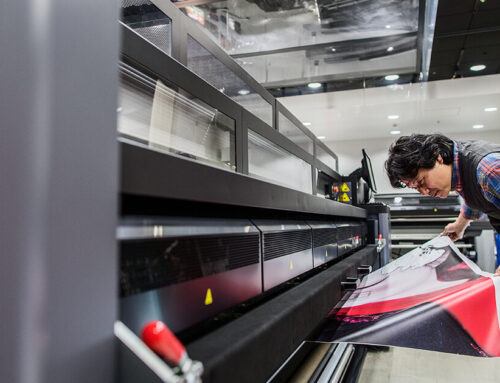The NBA elevates the game and fan experience thanks to technology and tech-savvy team owners willing to try new things.
The small forward holds the ball for a moment just inside the three-point circle, fakes a move to the basket to juke out his defender, then calmly takes a step back beyond the three-point line and puts up a shot. The ball flies in a high arc and swishes through the net. It’s a picture-perfect shot, and an assist goes to the point guard who threw him a pass. But the shooter got just as big an assist from his team’s invisible sixth player on the court: technology. Big data analytics led the coach to call the play; digital video cameras and IoT sensors tracking the player’s shooting motion during games and practices helped him refine his skills and make sure his aim was true.
In today’s high-stakes, high-powered basketball world, plays like this are commonplace. Technology is dramatically changing the way the game is played and watched by fans. Basketball was invented in 1891, when James Naismith tacked up empty peach baskets in a YMCA in Springfield, Massachusetts, and established 13 rules of play. Though the game is more than 120 years old, it’s been altered by many rule changes and the increasing athleticism, size, and power of the men and women who play it. But now, advances in video and sensor technology, cloud computing, big data analytics, artificial intelligence, and other tech breakthroughs has changed the game in other ways in just a few short years. Prodded by a generation of tech-savvy owners (including well-known tech billionaires Steve Ballmer and Mark Cuban), technology has taken center court. And there’s no going back—even bigger changes may be in store over the next five years.
It’s all about the data
One of the primary movers behind the changes is the same thing that drives the business tech revolution: data, and lots of it. Earlier this decade, the National Basketball Association installed a video and data system called STATS SportVU in all of the league’s 30 arenas. Cameras capture all the player and ball movements, including who scored baskets, what kinds of shots were made and missed, players’ positions and speeds, and more.
Before SportVU, teams tracked what data they could but by hand. After SportVU, they’ve been flooded with vast amounts of data and need new tools, including AI, to make sense of it all. Brian Kopp, a sports executive who worked on the SportVU rollout, put it this way in an Inside Science article about the use of AI in basketball: “Along came SportVU, and the data we captured could not be contained in Microsoft Excel.”
Teams at the collegiate and professional level now use a host of data and analytics tools including ShotTracker, which takes a different approach to data capture than SportVU. It uses a sensor-enabled ball, tiny sensors worn by players, and sensors installed in an arena’s rafters. The system provides coaches with live data and analytics, fans with live data, and players with their own customized results so they can pinpoint their strengths and weaknesses and learn from them.
ShotTracker co-founder and chief operating officer Davyeon Ross says analytics systems like his are revolutionizing the way the game is played.
“Coaches can now know, for example, what scoring efficiency their teams have when passing the ball, three, four, five, or six times and can change their strategies live during the game,” he says. And that’s just the basics. It gets more sophisticated from there.
Ross says NBA teams, like the Houston Rockets, have used analytics to dramatically change their shot selection. The Rockets, he notes, now mainly shoot either three-point shots or take shots from close into the basket, while taking far fewer in-between shots. They’ve found that’s the most efficient way to score points.
Data and analytics, Ross says, is used by teams for more than game strategy, “Teams use analytics to scout and draft the right players and increase ticket sales by knowing the profiles of people who come to games,” he says. The Sacramento Kings are a prime example of that. In 2013, the Kings were bought by a group led by Silicon Valley tech entrepreneur Vivek Ranadivé, at a time when the team was struggling to sell tickets. Under Ranadivé’s leadership, the Kings turned to an AI and analytics platform called Conversica to better identify potential ticket buyers and deployed an AI-driven virtual assistant to reach out to fans. That increased sales and turned the franchise around.
Players are also using technology for more than improving their shooting skills. Ross says they’re using technology like heart-rate monitors to track their health and track and manage their sleep.
“The NBA has a very long season,” he says. “So players are using technology to make sure they stay healthy throughout it. They’re even using techniques like cryotherapy [using extreme cold to recover more quickly from the physical stress of games] to extend their careers.”
Improving the fan experience
Without fans, there is no league. And so teams are starting to use tech tools like augmented and virtual reality and AI-created instant replays beamed to the seats to satisfy a fan base increasingly used to streaming media and instant statistics, says Courtney Brunious, associate director of the University of Southern California’s Sports Business Institute.
“The NBA is engaging in new ways with fans,” he says. “You can now watch some NBA games at home using virtual reality headsets so you feel as if you’re at the arena.” Augmented reality will come next, he believes, in which data will be overlaid over immersive virtual reality apps—the probability that the shot just launched will be made, for example.
There’s even more for the fans. The Golden State Warriors have used a Facebook Messenger bot to send fans highlight videos during playoff games only few seconds after plays. And the NBA uses the services of WSC Sports to use AI to automatically create highlight videos without human intervention.
Technology is being used to enhance the game experience for more down-to-earth reasons as well, Ross says, such as letting fans order beer and food from their seats using cell phones or calling up a map of the arena so they can more easily find any of its amenities.
The way you watch the game will change—you can bet on it
The way fans experience the game will change even more, thanks to a 2018 ruling by the Supreme Court that legalized betting on professional sports. Each state will decide whether to allow it and how to regulate it. Eight states have already legalized it, and Washington, D.C., and 30 others are moving toward legalization, reports ESPN.
Fans love betting—the New York Times estimates illegal sports betting totals $150 billion a year. When fans bet on games, they tend to be more engaged because their money is on the line, says Ross. Even blowout games in which the outcome is a foregone conclusion can be made exciting by betting during the game—for example, whether a certain player will get 20 points during the game, whether the next shot made will be a three-point one, and so on. This in-game betting is fueled by statistics and analytics, which means tech will play an even more central role in basketball when gambling is legalized by more states.
“Those who gamble want to get as much information and data as possible, including advanced analytics models, in order to gain an edge,” Brunious says. “So you’ll see even more data gathered and shared with fans.”
Ross says that could potentially lead to a kind of data war, in which new companies vie to provide bettors with the fastest access to the most advanced data.
“It’s going to be all about who can get the data fastest and who can build the best algorithms,” he says.

Owners lead the way
The inexorable spread of technology throughout basketball shows no signs of slowing, in part because of who owns basketball teams—a combination of those who have made their fortunes on technology and those who have used it in business and their personal lives. The Cleveland Cavaliers, Dallas Mavericks, Sacramento Kings, Los Angeles Clippers, Memphis Grizzlies, and Portland Trail Blazers are all owned by former tech executives, and many other teams are headed by tech-smart owners.
Because of that, not only are they willing to try new technologies, but they’re willing to experiment with it in surprising ways. One under-the-radar example is a venture into the booming business of e-sports professional video gaming, which, according to games and e-sports marketing analytics company Newzoo, had nearly a billion dollars in revenue in 2018 and a total worldwide audience of 380 million people. The NBA sponsors a professional basketball video game e-sports league called NBA 2K, with entries from 21 of the NBA’s teams. Brunious says the league has launched it in order to reach fans who have been more interested in video games than in traditional athletic events, hoping to convert them to become fans of the in-arena athletic teams. The league also hopes NBA 2K will eventually become a serious revenue generator on its own.
Given all this, expect technology to become even more central to basketball than it already is. There will likely be some bumps along the way—Brunious says there’s a looming issue about the privacy and ownership of data about players, such as about their sleep habits, health information, and ways in which they practice. But he expects that and other issues to be resolved and for technology to be used in ways we haven’t yet imagined.
“The owners of NBA teams are more tech-savvy than owners of baseball and football teams,” Brunious says. “In those leagues, owners are a lot more entrenched in their ways. Sometimes they’re owned by families who have owned the team for many decades. In the NBA, owners tend to come from the tech side and are used to technology and making decisions using analytics. They’re more willing to try new things.”
Basketball tech: Lessons for leaders
- Big data analytics, used for everything from helping coaches call plays to improving players’ skills and increasing ticket sales, drives the basketball tech revolution.
- Basketball team owners who are tech-savvy (six owners are tech executives) often make decisions based on analytics and are willing to experiment with tech in innovative ways.
- Legalized sports gambling will likely increase fan engagement and may lead to a boom in startups providing gamblers with game data and analytical tools.









